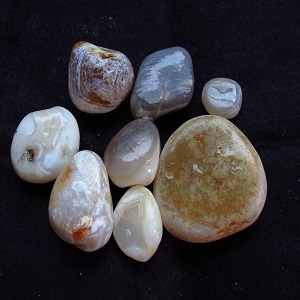A brief history of the Azurite gemstone
Azurite is one of the rare types of copper ore with gem quality. Azurite is one of two types of copper carbonate minerals (the other type is green marble). Azurite is rarer than green marble and therefore more valuable. The name azarite is derived from the Persian word “Lazord”, which refers to its characteristic and blue color
Azurite is an almost soft stone and its use in jewelry is very little. In fact, it can be said that azurite is sought after by jewelry and gemstone collectors more than jewelry designers
Azurite with the chemical formula Cu3[OH|CO3]2 is a soft copper mineral that is formed by weathering and deposits of copper ore
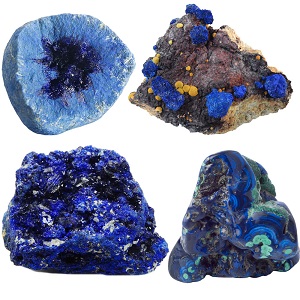
Azurite is one of the basic minerals of copper II carbonate, and its other mineral is malachite. Simple copper carbonate CuCO3 does not exist in free form in nature, and in azurite it is associated with two anions, hydroxide and carbonate. Its chemical formula is Cu3(CO3)2(OH)2. If a few drops of copper sulfate are vigorously shaken (stirred) in a saturated solution of sodium carbonate and kept overnight; In this way, small azurite crystals can be obtained
Due to the unique blue color of this mineral, since ancient times, it has always been desired to associate this mineral with the color of the cloudless blue sky. This mineral is also found in China, Germany, France, Chile, Australia and America
In fact, the name of this stone is derived from the meaning of azure blue. This stone is dark to light blue in color and has a glassy luster, and is often found around copper mines along with malachite. Azurite stone boils with hydrochloric acid and creates a blue solution with ammonia liquid, Azurite belongs to the lapis lazuli family. Azurite is brittle and can be easily dissolved in ammonia in addition to acids. Azurite has been used as a pigment for centuries. Depending on the amount of copper carbonate in it, a range of blue color is obtained from it. Azurite turns black due to heat (copper oxide). Of course, if azurite is slowly heated, it will turn into garlic blue pigment, which was used in painting art in Japan in the past

One of the main sources of azurite stone is known in Chesy, a small region in the eastern region of France, near Lyon. Due to this issue, the azurite stone has kept its original name as chessylite. In addition to these uses, azurite, like garnet, is used in industrial jewelry. In fact, since the Middle Ages, azurite has been used in the production of pigments and fabric dyes
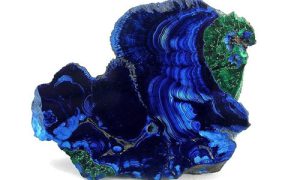
Azurite diagnosis
Azurite is easily recognized by its special azure blue color, but it does not have gold spots. Azurite is often combined with green marble, green marble mixture, and azurite species under the brand name “Azure-Malachite” or “Azure Malachite”
There are other varieties of azurite composition, among which one can mention cuprite composition, which is known as “blue bird” in the world of precious gems. With a simple test, any of these stones can be easily distinguished from azurite. Some of the stones that may be confused with azurite are sodalite, lazolite, domortirtite, haoin, but the color of azurite is very specific and all similar stones can be easily distinguished by close examination
Sources of Gemstones and Origins of Azurite
Azurite is found in various regions around the world. Its most important origins can be mentioned in Utah, Arizona and New Mexico in the United States. Other sources of this stone are in Mexico, Namibia, Morocco, France and Australia. One of the most important sources of azurite has been in Chesy, around eastern France
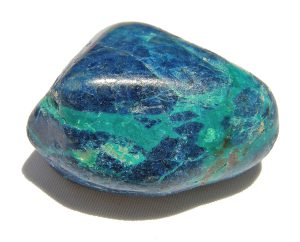
Determining the value of azurite gemstones
Azurite color
Azurite is known for its clear blue color. The name “azure blue” refers to the deep azure blue color found in azurite. Azurite is often found in combination with green malachite, which means blue and green colors are seen in it
The transparency and brilliance of azurite
Azurite is often found opaque. When this stone is cut and polished, its appearance becomes glassy and transparent like malachite. Transparent and semi-transparent varieties are rare but still found
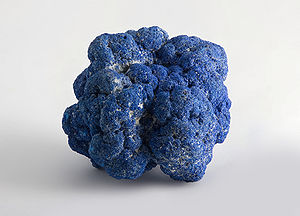
Cut and shape of azurite
Today, azurite is known as a collector’s stone. Azurite is very rare and when it is found as a gemstone, it is cut as a courgette. It is used as ornaments and jewelry stone carvings. Azurite is also sold in the form of beads and mixed stones, but due to the softness of this stone, it is not suitable for bead jewelry. Azurite-Malachite is more common than pure azurite and is often cut into cogs, or it is also presented as tumbled and beaded stones
Azurite processing
Azurite often does not require special processing. In fact, there is no official and precise method for this. Some species are covered with a layer of colorless wax to preserve their shine. This method is not common and if it exists, it should be reported by the seller
A variety of gemstones similar to azurite
Azurite has no closely related stones in composition (except malachite) and the hollow form of azurite. Azurite has a close and similar color to stones such as lapis lazuli, solidite and lazolite. Azurite is often found mixed with malachite. Malachite mixtures are usually green spots in the blue crystals of azurite. These stones are known as “Azure-Malachite” or “Azure Malachite”. The combination of cuprite and azurite is known in the trade as “blue bird”. These stones are rare and have many fans among gem and mineral collectors
The most known gemstones and related minerals
Azur-malachite, malachite, sodalite, lapis lazuli, carvite are among the most common and famous gemstones similar to azurite
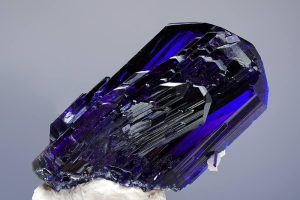
Lesser Known Gemstones and Related Minerals
Blue bird azurite, domortirtite quartz and haoin are rarer and less known species similar to azurite

